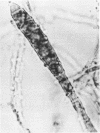Abstract
Microsporum persicolor, a zoophilic dermatophyte species, is seldom recorded causing human infections in North America. Its identification has been enhanced as a direct result of the development of improved techniques for its characterization. Identifying characteristics include induction of rough-walled macroconidia on sodium chloride-amended medium, absence of good growth at 37 degrees C, and absence of a pH change during growth on casein glucose medium. In contrast, Trichophyton mentagrophytes, a species commonly confused with M. persicolor, has smooth-walled macroconidia, grows well at 37 degrees C, and produces an alkaline reaction on casein glucose medium.
Full text
PDF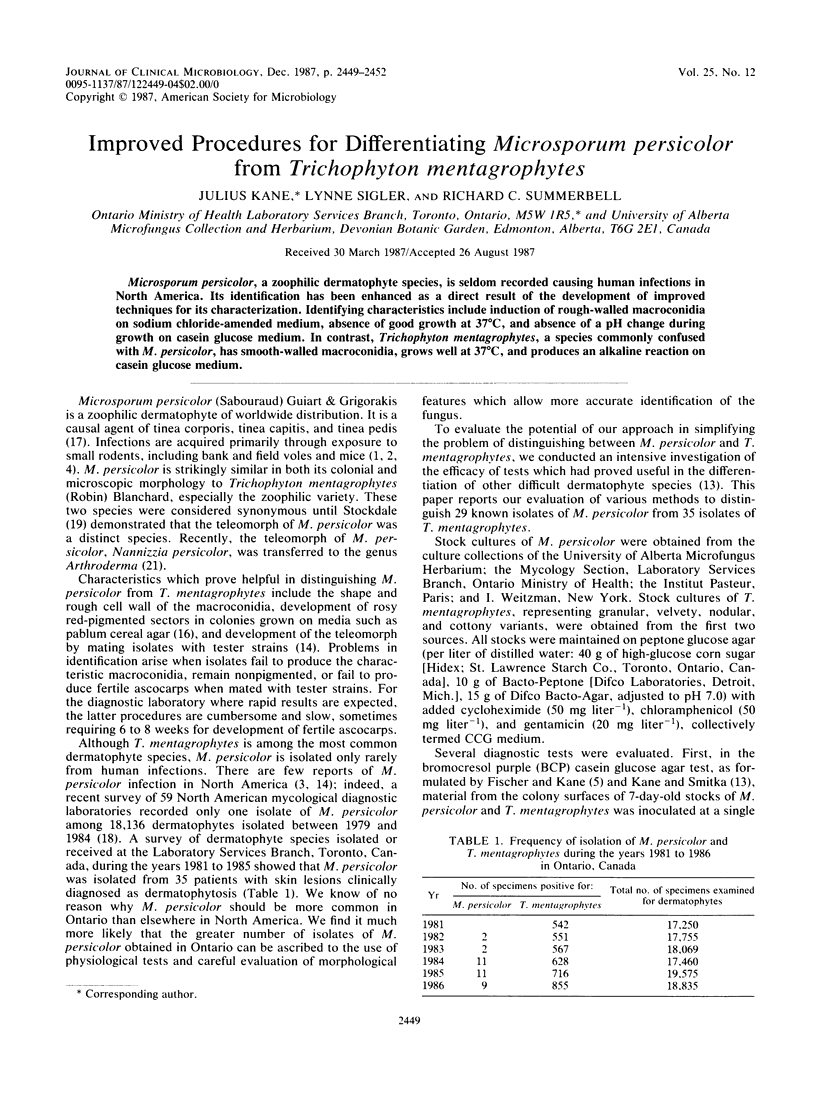
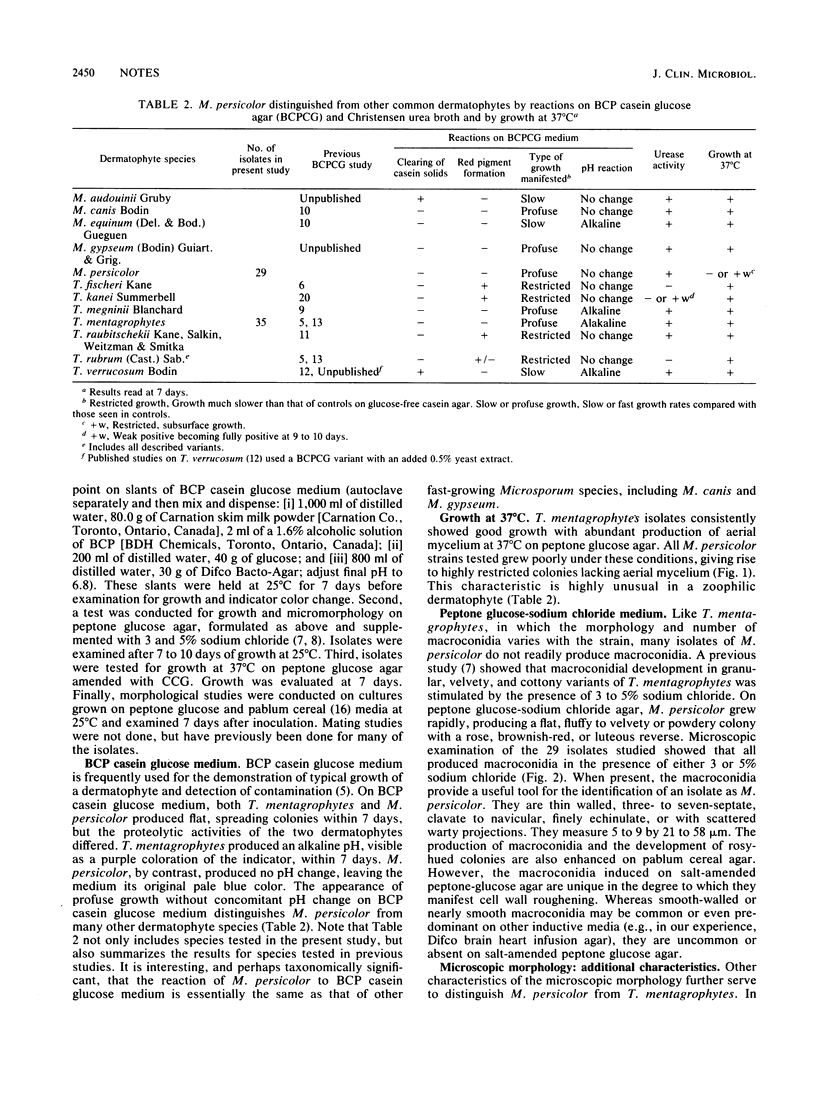
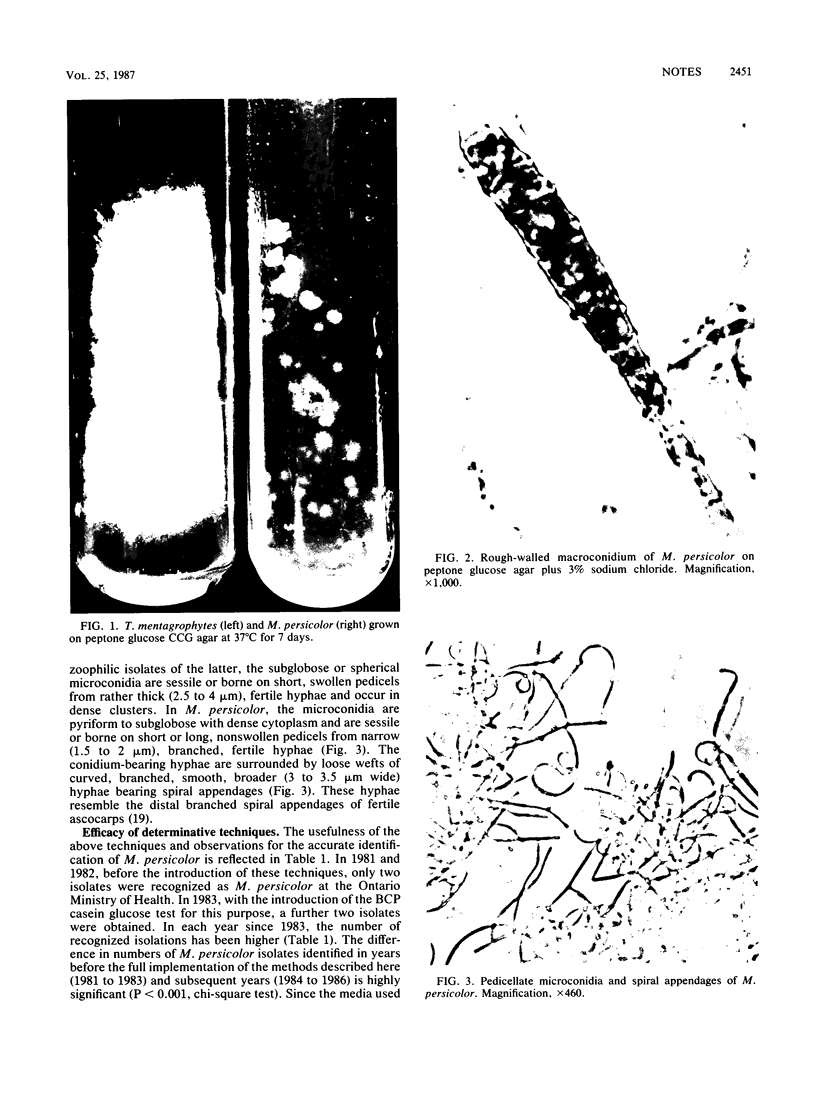
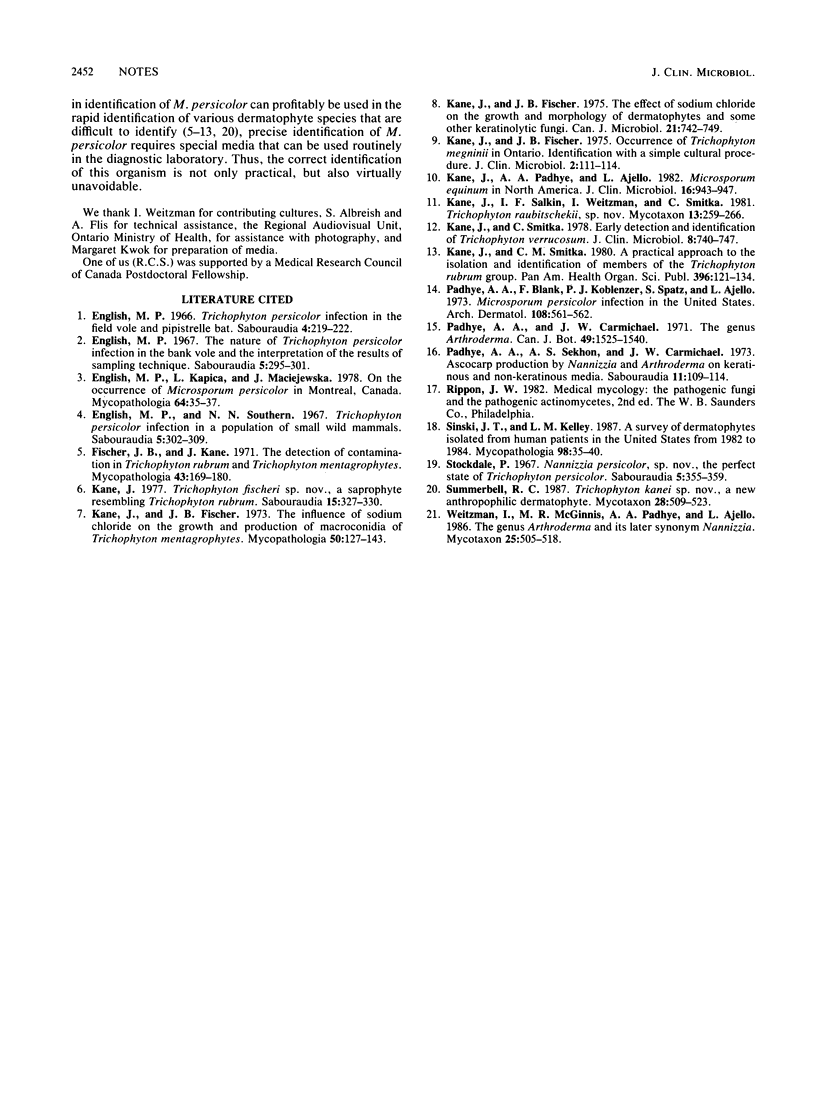
Images in this article
Selected References
These references are in PubMed. This may not be the complete list of references from this article.
- English M. P., Kapica L., Maciejewska J. On the occurrence of Microsporum persicolor in Montreal, Canada. Mycopathologia. 1978 Sep 1;64(1):35–37. doi: 10.1007/BF00443086. [DOI] [PubMed] [Google Scholar]
- English M. P., Southern H. N. Trichophyton persicolor infection in a population of small wild mammals. Sabouraudia. 1967 Jun;5(4):302–309. [PubMed] [Google Scholar]
- English M. P. The nature of Trichophyton persicolor infection in the bank vole and the interpretation of the results of sampling techniques. Sabouraudia. 1967 Jun;5(4):295–301. [PubMed] [Google Scholar]
- English M. P. Trichophyton persicolor infection in the field vole and pipistrelle bat. Sabouraudia. 1966 Feb;4(4):219–222. doi: 10.1080/00362176685190501. [DOI] [PubMed] [Google Scholar]
- Fischer J. B., Kane J. The detection of contamination in Trichophyton rubrum and Trichophyton mentagrophytes. Mycopathol Mycol Appl. 1971 Feb 19;43(2):169–180. doi: 10.1007/BF02051718. [DOI] [PubMed] [Google Scholar]
- Kane J., Fischer J. B. Occurrence of Trichophyton megninii in Ontario. Identification with a simple cultural procedure. J Clin Microbiol. 1976 Aug;2(2):111–114. [PMC free article] [PubMed] [Google Scholar]
- Kane J., Fischer J. B. The effect of sodium chloride on the growth and morphology of dermatophytes and some other keratolytic fungi. Can J Microbiol. 1975 Jun;21(6):742–749. doi: 10.1139/m75-110. [DOI] [PubMed] [Google Scholar]
- Kane J., Fischer J. B. The influence of sodium chloride on the growth and production of macroconidia of Trichophyton mentagrophytes. Mycopathol Mycol Appl. 1973 Jul 5;50(2):127–143. doi: 10.1007/BF02049951. [DOI] [PubMed] [Google Scholar]
- Kane J., Padhye A. A., Ajello L. Microsporum equinum in North America. J Clin Microbiol. 1982 Nov;16(5):943–947. doi: 10.1128/jcm.16.5.943-947.1982. [DOI] [PMC free article] [PubMed] [Google Scholar]
- Kane J., Smitka C. Early detection and identification of Trichophyton verrucosum. J Clin Microbiol. 1978 Dec;8(6):740–747. doi: 10.1128/jcm.8.6.740-747.1978. [DOI] [PMC free article] [PubMed] [Google Scholar]
- Padhye A. A., Blank F., Koblenzer P. J., Spatz S., Ajello L. Microsporum persicolor infection in the United States. Arch Dermatol. 1973 Oct;108(4):561–562. [PubMed] [Google Scholar]
- Padhye A. A., Sekhon A. S., Carmichael J. W. Ascocarp production by Nannizzia and Arthroderma on keratinous and non-keratinous media. Sabouraudia. 1973 Jul;11(2):109–114. [PubMed] [Google Scholar]
- Sinski J. T., Kelley L. M. A survey of dermatophytes isolated from human patients in the United States from 1982 to 1984. Mycopathologia. 1987 Apr;98(1):35–40. doi: 10.1007/BF00431015. [DOI] [PubMed] [Google Scholar]
- Stockdale P. M. Nannizzia persicolor sp. nov., the perfect state of Trichophyton persicolor Sabouraud. Sabouraudia. 1967 Jun;5(4):355–359. [PubMed] [Google Scholar]




